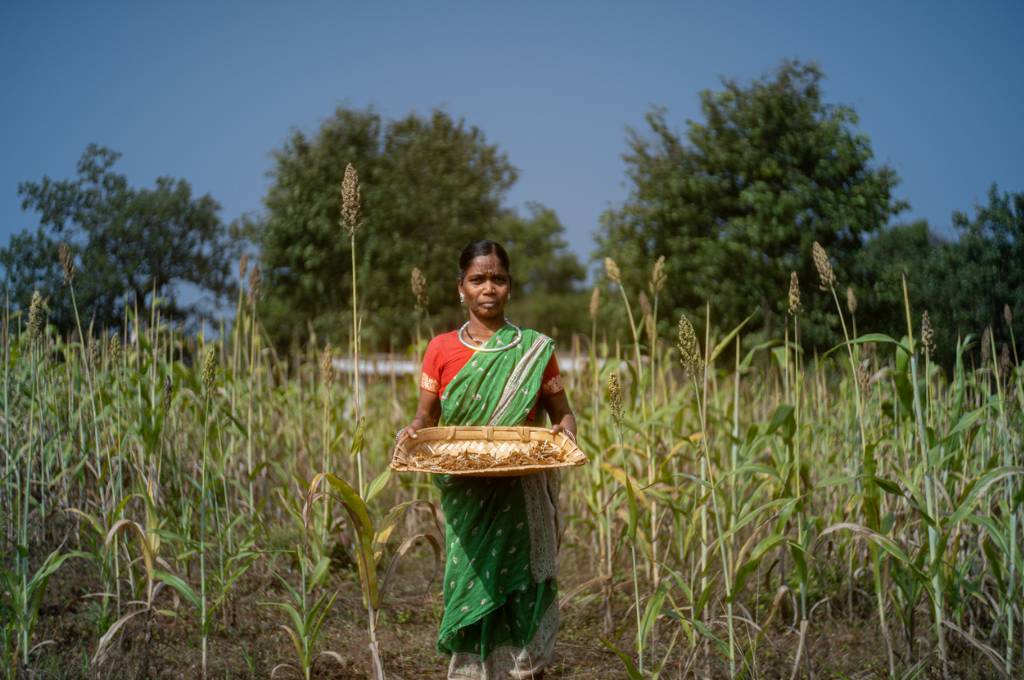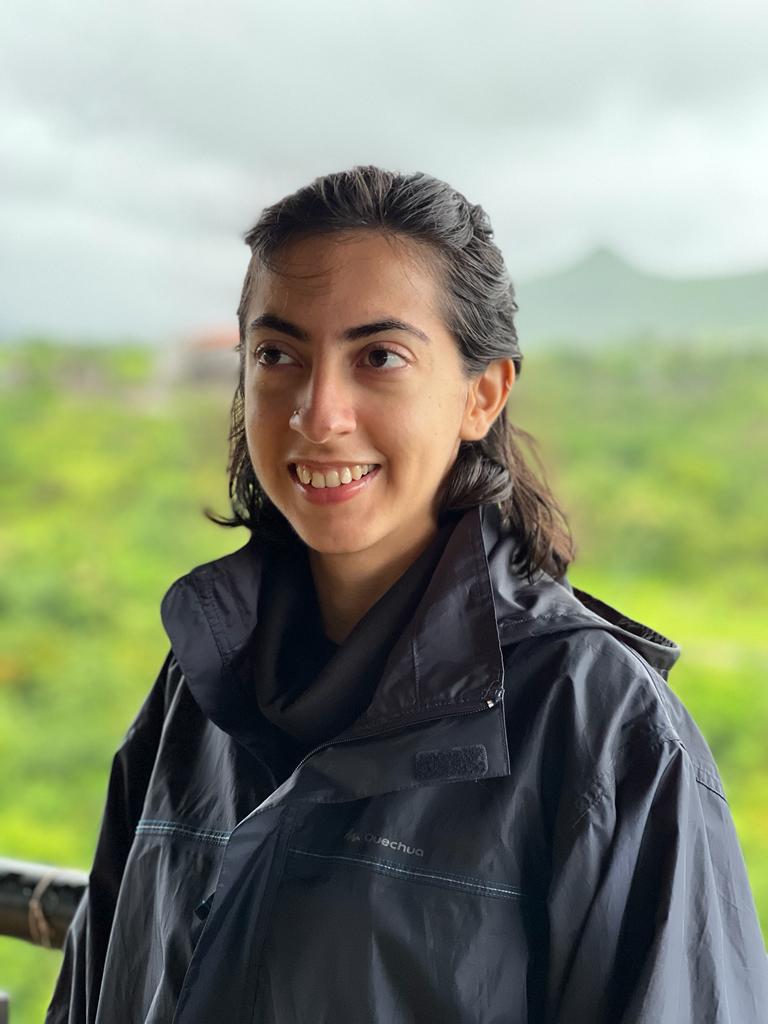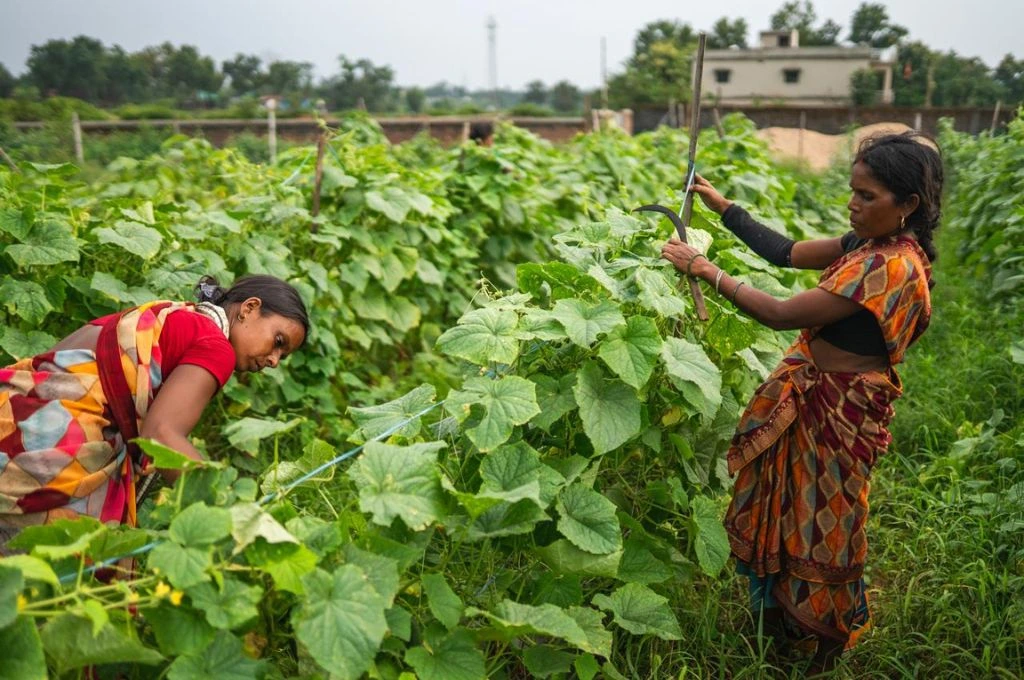India spearheaded the United Nations’ resolution to designate 2023 as the International Year of Millets. This was in honour of the small-seeded grasses that have been cultivated and consumed in the country for centuries. These hardy, nutrition-dense grains are water-efficient, do not require chemical inputs, and can weather extreme heat and drought, making them an essential tool in ensuring food and nutrition security in a warming world. The reasons to scale millets are myriad and evident. But despite strong policy signals and good intent, significant challenges stand in the way.
While contexts vary across the country, over the last few decades a general trend has emerged: many rural communities are transitioning away from cultivating millets and towards paddy rice, most often using hybrid seeds. At Earth Focus Foundation, we have witnessed this first-hand through our work with Gond and Baiga tribal communities around Kanha National Park in Madhya Pradesh. This shift has largely been driven by the creation of an end-to-end ecosystem around paddy cultivation, which began during the Green Revolution of the 1960s and has unfortunately left millets appearing inconvenient and undesirable.
While paddy may be more expensive to cultivate due to inputs such as hybrid seeds and synthetic fertilisers, it has a guaranteed sale through minimum support price (MSP). However, with the exception of a few states, millets don’t have an assured market despite significantly lower input costs. Hybrid crops like paddy also do not produce seeds that can be used to grow more crops of the same kind, so seeds need to be purchased every season, as opposed to heirloom millet seeds that continuously regenerate.

Compared with rice, harvesting millets is significantly more labour-intensive and is less of a community effort. Given that most families cultivate paddy in this landscape, they get together to sow and harvest it, whereas millet harvesting is usually managed by individual households.
Take the example of Savanti Bai, who lives with her husband in Mukki, a village near the entrance to Kanha National Park. Her daughters moved away after marriage, so she gathers her produce—mostly kodo and kutki millets—on her own. Every day, from daybreak to nightfall, she sits on her haunches with sickle in hand, slicing through these delicate grasses and tying them into small bundles.

Additionally, at present, there are no specialised tools available to farmers to harvest millets. When harvested with machinery designed for rice, minor millets such as kodo and kutki—which are lightweight like grass—break apart and get damaged. This leaves farmers like Savanti Bai with no option but to harvest them manually with a sickle, highlighting the need to develop low-cost, dedicated agricultural implements that reduce drudgery in the harvesting process.
In some cases, the gathering process can be simplified by co-opting existing paddy-centric machinery with minor tweaks and deploy it for millets. For example, a paddy thresher (which separates the stalk from grain) can be used for millets with a little fine-tuning to enhance efficiency.

Processing can also be a challenge for minor millets, especially for kodo and kutki, which have additional steps for refining the grain as compared to major millets such as jowar (sorghum), bajra (pearl millet), and ragi (finger millet). These can be burdensome to process manually, and this responsibility is typically borne by women.

Most processing centres are large-scale and aggregate millets grown across many regions through middlemen before channelling them forward to urban consumers. For example, most millets grown around Kanha are bought by middlemen at approximately INR 20 per kilo and sent to Nashik, a millet-processing hub. The lack of local infrastructure increases drudgery and limits farmers’ earning potential.
To test out a solution, we set up a small processing unit specialised for minor millets at the Earth Focus campus. We found that most families process grains for their own consumption. In addition, a few households that are connected with local tourist resorts are able to fetch prices as high as INR 150 per kilo. There are several such resorts in the area because of the high tourist footfall to the national park, and they serve as a key market opportunity for local farmers.
At the same time, there is a potential to further develop local businesses, as millets must be washed, cleaned, and dried before they can be ground into flour. Small-scale mills equivalent to atta chakkis can also be operated as local businesses run by self-help groups (SHGs) or farmer producer organisations (FPOs).

In cases where millets don’t go through middlemen, processing is followed by storage, packaging, and distribution. Typically, communities store their harvested millets in earthen pots and seal them with cloth. They tend to store the grain unprocessed, and process small quantities for consumption as and when required. Following these practices is crucial because kodo millets are prone to moisture contamination, which leads to the formation of fungal mycotoxins. These mycotoxins can cause vomiting, giddiness, and unconsciousness—among other symptoms—leading some farmers to believe that kodo millets become poisonous after rains. However, there are local checks and balances for this, such as storing millets with jaggery (presumably to absorb moisture) or feeding the first batch to livestock as a litmus test for sickness.
These kinds of issues make food safety practices of the utmost importance in decentralising the millet value chain. If these millets are to be sold beyond the place of production and its immediate vicinity, best practices need to be in place to prevent public backlash to contaminated millets. For example, proper storage and packaging ensure that moisture does not seep into the grain, and prevent the growth of fungus. Inventory management is also vital as it helps identify if a batch is compromised and needs to be recalled or disposed of.
With these norms in place, the millet value chain holds considerable opportunity to grow rural enterprises. For example, the Narmada Self-Reliant Farmers Producer Company Limited in the neighbouring district of Mandla set up a millet processing unit in 2023. This FPC, supported by Reliance Foundation and catering largely to tribal farmers, sells processed millets to established brands in the urban market.

Millets hold great promise to nurture rural livelihoods and ensure food security. But to achieve their true potential, they need the support of a comprehensive ecosystem. If we want to reintroduce millets into diets across India, we need to address issues that arise throughout the value chain, particularly those with respect to harvesting and processing. We need to build capacity and infrastructure at the local level to process, store, test, and package these grains to ease their production and distribution. In short, we need to build a supportive infrastructure around millets, just as we did for rice and wheat in the 1960s—moving the goalpost forward from food security to nutrition and climate resilience.
—
Know more
- Read this article to learn about what policymakers need to keep in mind as they promote millets in India.
- Read this article to understand how India’s public distribution system can help in popularising millet.
- Read this article to learn why India needs to invest in millet processing machines.






